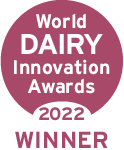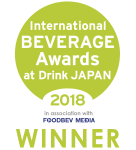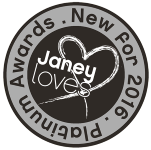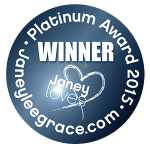Salmonella is a genus of bacteria that includes various species known to impact human health and cause disease significantly. Here is an overview of how Salmonella interacts with human health:
- Food-borne illness: Salmonella species, such as S. enterica and S. bongori, are responsible for salmonellosis, a common food-borne illness that causes symptoms like diarrhoea, abdominal pain, fever, and vomiting. It is primarily transmitted through contaminated food, water, or contact with infected animals.1Ehuwa O, Jaiswal AK, Jaiswal S. Salmonella, Food Safety and Food Handling Practices. Foods. 2021 Apr 21;10(5):907. doi: 10.3390/foods10050907.2Giannella RA. Salmonella. In: Baron S, editor. Medical Microbiology. 4th edition. Galveston (TX): University of Texas Medical Branch at Galveston; 1996. Chapter 21. Available from: https://www.ncbi.nlm.nih.gov/books/NBK8435/
- Antibiotic resistance: Salmonella species can develop antibiotic resistance, complicating the treatment of infections. Some strains exhibit multidrug resistance, which necessitates the use of alternative treatments or combination therapy.3V T Nair D, Venkitanarayanan K, Kollanoor Johny A. Antibiotic-Resistant Salmonella in the Food Supply and the Potential Role of Antibiotic Alternatives for Control. Foods. 2018 Oct 11;7(10):167. doi: 10.3390/foods7100167.4Wang X, Biswas S, Paudyal N, Pan H, Li X, Fang W, Yue M. Antibiotic Resistance in Salmonella Typhimurium Isolates Recovered From the Food Chain Through National Antimicrobial Resistance Monitoring System Between 1996 and 2016. Front Microbiol. 2019 May 7;10:985. doi: 10.3389/fmicb.2019.00985.
- Animal reservoirs: Salmonella species can infect a wide range of animals, including birds, reptiles, and mammals, which can serve as reservoirs for bacteria. Controlling the spread of Salmonella in animal populations is crucial for reducing the risk of human infections.5DE Knegt LV, Pires SM, Hald T. Attributing foodborne salmonellosis in humans to animal reservoirs in the European Union using a multi-country stochastic model. Epidemiol Infect. 2015 Apr;143(6):1175-86. doi: 10.1017/S0950268814001903.6Mughini-Gras L, Enserink R, Friesema I, Heck M, van Duynhoven Y, van Pelt W. Risk factors for human salmonellosis originating from pigs, cattle, broiler chickens and egg laying hens: a combined case-control and source attribution analysis. PLoS One. 2014 Feb 4;9(2):e87933. doi: 10.1371/journal.pone.0087933.
- Typhoid fever: S. Typhi and S. Paratyphi A, B, and C are responsible for typhoid fever, a more severe systemic illness characterised by high fever, weakness, abdominal pain, and occasionally a rash. Typhoid fever is typically spread through contaminated food or water and requires antibiotic treatment.7Bhandari J, Thada PK, DeVos E. Typhoid Fever. [Updated 2022 Aug 10]. In: StatPearls [Internet]. Treasure Island (FL): StatPearls Publishing; 2023 Jan-. Available from: https://www.ncbi.nlm.nih.gov/books/NBK557513/8Dougan G, Baker S. Salmonella enterica serovar Typhi and the pathogenesis of typhoid fever. Annu Rev Microbiol. 2014;68:317-36. doi: 10.1146/annurev-micro-091313-103739.9Nabarro LE, McCann N, Herdman MT, Dugan C, Ladhani S, Patel D, Morris-Jones S, Balasegaram S, Heyderman RS, Brown M, Parry CM, Godbole G. British infection association guidelines for the diagnosis and management of enteric fever in England. J Infect. 2022 Apr;84(4):469-489. doi: 10.1016/j.jinf.2022.01.014.
In summary, Salmonella bacteria play a significant role in human health, causing food-borne illnesses like salmonellosis and more severe conditions such as typhoid fever. Understanding and addressing the risks associated with the presence of Salmonella species in your microbiome sample is vital for protecting the delicate balance of your gut microbial ecosystem.
Where to find Salmonella in the Chuckling Goat Gut Microbiome Test
You will find your Salmonella scores in the “Pathogens” report in your Chuckling Goat Gut Microbiome Test results. Guidance on how to work with pathogens like Salmonella will be featured in your Personal Action Plan. Please note that this information is not intended to be a substitute for professional medical advice, diagnosis, or treatment. Always seek the advice of your GP or other qualified health provider if you have any questions about Salmonella.
Synonyms: Salmonella enterica, Salmonella Typhimurium, S. Typhi, S. Paratyphi, Salmonella species, Salmonella infection
Important disclaimer
The Chuckling Goat Gut Microbiome Handbook is an educational resource built to translate complex science into plain English. The information provided on this page is not intended to be a substitute for professional medical advice, diagnosis, or treatment. Always seek the advice of your GP or other qualified health provider with any questions you may have regarding a medical condition. Always check with your GP for interactions with medications/health conditions before changing your diet or starting to take food supplements.
References
- 1Ehuwa O, Jaiswal AK, Jaiswal S. Salmonella, Food Safety and Food Handling Practices. Foods. 2021 Apr 21;10(5):907. doi: 10.3390/foods10050907.
- 2Giannella RA. Salmonella. In: Baron S, editor. Medical Microbiology. 4th edition. Galveston (TX): University of Texas Medical Branch at Galveston; 1996. Chapter 21. Available from: https://www.ncbi.nlm.nih.gov/books/NBK8435/
- 3V T Nair D, Venkitanarayanan K, Kollanoor Johny A. Antibiotic-Resistant Salmonella in the Food Supply and the Potential Role of Antibiotic Alternatives for Control. Foods. 2018 Oct 11;7(10):167. doi: 10.3390/foods7100167.
- 4Wang X, Biswas S, Paudyal N, Pan H, Li X, Fang W, Yue M. Antibiotic Resistance in Salmonella Typhimurium Isolates Recovered From the Food Chain Through National Antimicrobial Resistance Monitoring System Between 1996 and 2016. Front Microbiol. 2019 May 7;10:985. doi: 10.3389/fmicb.2019.00985.
- 5DE Knegt LV, Pires SM, Hald T. Attributing foodborne salmonellosis in humans to animal reservoirs in the European Union using a multi-country stochastic model. Epidemiol Infect. 2015 Apr;143(6):1175-86. doi: 10.1017/S0950268814001903.
- 6Mughini-Gras L, Enserink R, Friesema I, Heck M, van Duynhoven Y, van Pelt W. Risk factors for human salmonellosis originating from pigs, cattle, broiler chickens and egg laying hens: a combined case-control and source attribution analysis. PLoS One. 2014 Feb 4;9(2):e87933. doi: 10.1371/journal.pone.0087933.
- 7Bhandari J, Thada PK, DeVos E. Typhoid Fever. [Updated 2022 Aug 10]. In: StatPearls [Internet]. Treasure Island (FL): StatPearls Publishing; 2023 Jan-. Available from: https://www.ncbi.nlm.nih.gov/books/NBK557513/
- 8Dougan G, Baker S. Salmonella enterica serovar Typhi and the pathogenesis of typhoid fever. Annu Rev Microbiol. 2014;68:317-36. doi: 10.1146/annurev-micro-091313-103739.
- 9Nabarro LE, McCann N, Herdman MT, Dugan C, Ladhani S, Patel D, Morris-Jones S, Balasegaram S, Heyderman RS, Brown M, Parry CM, Godbole G. British infection association guidelines for the diagnosis and management of enteric fever in England. J Infect. 2022 Apr;84(4):469-489. doi: 10.1016/j.jinf.2022.01.014.













